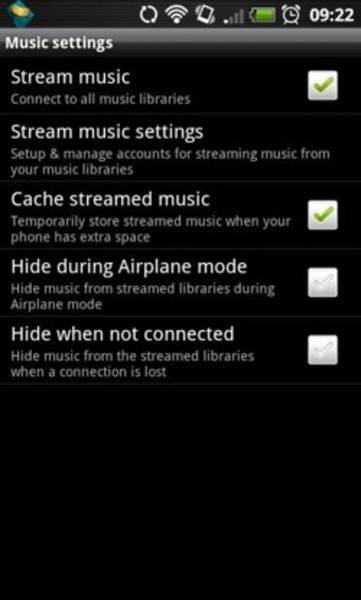Google has acquired PushLife, a mobile music application which allowed users synchronize tracks on their desktop computers with their mobile phones. Supported devices included those from Nokia, BlackBerry and any running Google’s Android mobile operating system. The deal comes ahead of Google’s expected launch of Google Music, a service Google demonstrated at its developer conference last year, and is now reportedly undergoing in-house testing.

But if Google Music is so close to launch, after having been in development for over a year, why is Google just now buying the technology of a small-time competitor in this space? What hole does PushLife fill?
The Acquisition
From Toronto-based PushLife’s website, a message reads, in part:
We’ll be joining Google’s engineering team in Canada, and will be working on building better mobile applications for all users.
According to TechVibes and StartupNorth’s coverage, the company was acquired for $25 million. To put that number in perspective, when Apple purchased the streaming music service Lala.com, it was (reportedly) for $17 million.
What Did PushLife Do?
In the service’s FAQ, it’s revealed that the company’s application was relatively new – arriving in the U.S. in January 2011. The cross-platform mobile app supported Nokia (S40 and S60), LG, Samsung, BlackBerry and Android mobile devices. To use the service, a “PushLife-enabled” mobile phone plugs into a desktop computer, then syncs with either iTunes or Windows Media Player, depending on user preference.
This functionality sounds similar to what several third-party applications now provide for Android users: a pseudo-iTunes desktop experience. For example, with the popular doubleTwist application, users can sync their iTunes playlists, videos and photos to their Android phone, even over Wi-Fi.
So Google Music Gets Desktop Sync?
For Google, PushLife’s technology could help provide a stopgap solution that bridges the planned Google Music cloud service with a service offering desktop sync. Like Amazon’s recently launched Cloud Player for Android, Google’s new Google Music service was going to sync tunes from the PC to the “cloud,” in this case, the cloud being Google’s own servers.

This functionality was revealed by accident when users on the XDA-Developers forum managed to turn on the feature on their Android devices. They also discovered a new “steam music” option.
But streaming is still an emerging technology use case for mobile music consumption, and one that’s plagued by issues involving shoddy 3G connections, lack of cellular signal and other bandwidth-related problems. Not everyone can – or wants to – stream their music. Some still prefer to sync their phones with their PC, as iTunes provides.
PushLife was offering that same sync feature prior to its Google acquisition, in addition to some sort of store functionality, which allowed users to purchase music, videos, wallpapers, games and ringtones from their phone. It’s reasonable to think that Google will offer at least some of these features in its new Google Music product, once the acquired technology is integrated.
If so, that means that Google is attempting to one-up both iTunes and Amazon’s new Cloud Player service, the latter which provides cloud-based music streaming from Amazon’s servers, but not desktop sync where tracks physically stored on the PC are directly copied over to the mobile phone.
It will be interesting to see if PushLife, once integrated, will continue to offer iTunes and Windows Media sync, in addition to support for purchases from Google Music itself, or if the connector functionality will be limited to Google services only.
But Wait, Didn’t Google Already Have Desktop Sync Functionality?
What’s also intriguing about this acquisition news, however, is that the functionality that seemingly stands at the forefront of PushLife’s service – desktop sync – was not something Google should have needed. In May 2010, Google bought Simplify Media, a company which also had offered desktop syncing between iTunes or Windows Media player and mobile devices.
What then, did PushLife offer that Simplify did not? Could it be that store functionality, with its easy way to purchase music, videos, wallpapers and more, that Google really wanted? Or maybe it was PushLife’s ability to let its users manage their library, create and edit playlists and socially share their music interests with friends? Then again, maybe it was PushLife’s recommendations feature, which could compete with iTunes’ Genius?
Whatever the case may be, it’s clear that Google is attempting to build a real iTunes competitor with its Google Music product – one that includes sync to desktop and cloud, plus online storage and streaming.









